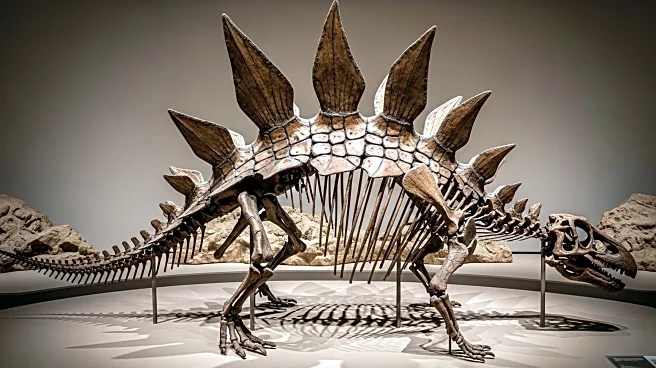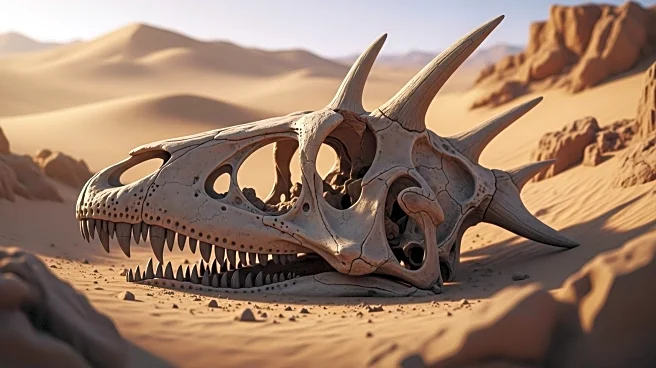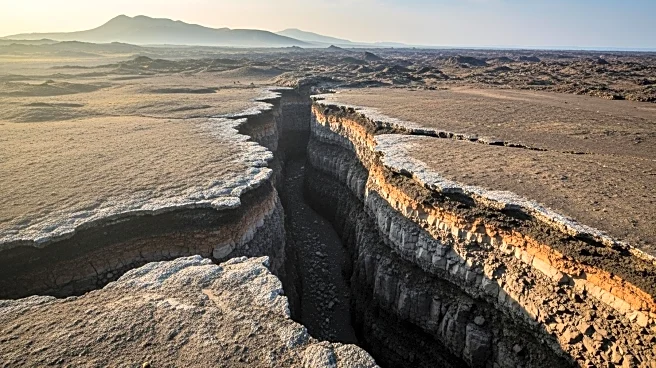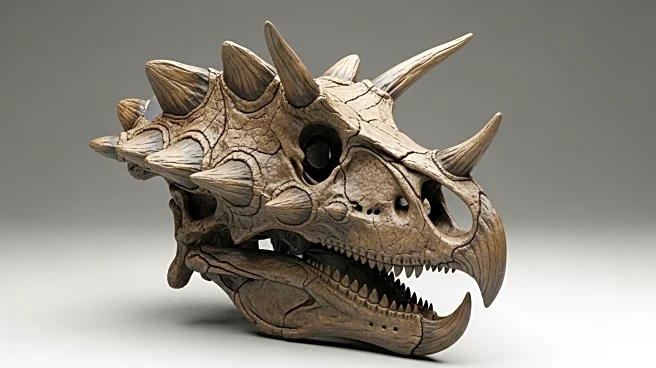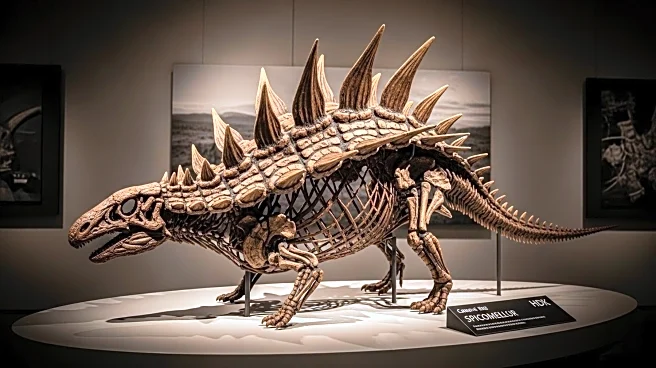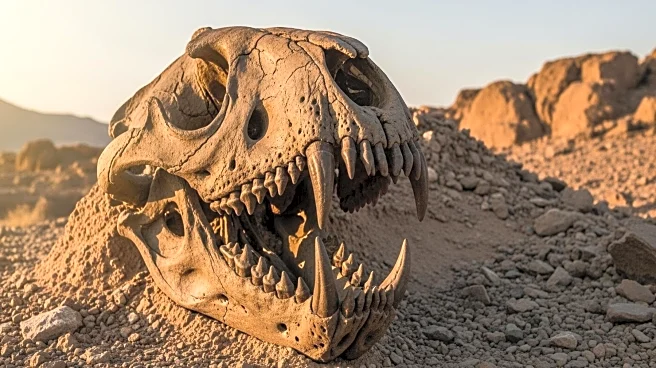What is the story about?
What's Happening?
A recent paleontological discovery in the Middle Atlas Mountains of Morocco has unveiled a unique dinosaur species, Spicomellus afer, characterized by a distinctive bony collar with three-foot-long spikes. This ankylosaur, the oldest known of its kind, lived over 165 million years ago during the Middle Jurassic period. The discovery marks the first ankylosaur found on the African continent, providing new insights into the evolution of these armored dinosaurs. The findings, published in Nature, suggest that Spicomellus had bony spikes fused onto its ribs, a feature not seen in any other vertebrate species, living or extinct. Researchers speculate that the spikes may have served a defensive function or been used for display purposes.
Why It's Important?
The discovery of Spicomellus afer is significant as it challenges existing theories about the evolution of ankylosaurs and their defensive mechanisms. The presence of such elaborate armor in an early ankylosaur suggests that these features developed much earlier than previously thought, potentially altering the timeline of dinosaur evolution. This finding highlights the importance of Africa's paleontological record in understanding global dinosaur biodiversity and evolution. It also underscores the need for further exploration and study of African fossils to gain a more comprehensive understanding of prehistoric life.
What's Next?
Further research is expected to focus on uncovering more fossils of Spicomellus afer to better understand its anatomy and ecological role. Paleontologists may also investigate the evolutionary pathways that led to the development of such unique armor in ankylosaurs. Additionally, the discovery may prompt increased funding and interest in African paleontological sites, potentially leading to more groundbreaking finds in the region.
Beyond the Headlines
The discovery of Spicomellus afer raises intriguing questions about the ecological pressures that led to the development of its unique armor. It may also influence the way scientists interpret the evolutionary history of other armored dinosaurs and their interactions with predators. The cultural significance of such discoveries in Africa could also inspire local interest in paleontology and conservation efforts.
AI Generated Content
Do you find this article useful?
